EU declaration conformity
Three phase fan speed controller | calendar function | 11 A
Product description
Motor Compatibility: It's designed for three-phase 400V motors with a maximum combined current of 11A.
Speed Control: The controller uses autotransformer technology to adjust the motor voltage, providing smooth, quiet operation with a perfect sinusoidal waveform.
Automation: A calendar and timer function allows for automatic switching between two pre-set speeds based on a weekly schedule.
Safety Features: It includes a TK monitoring function to protect the motor from overheating and an automatic restart feature that activates after a power outage.
Housing: The IP54-rated enclosure is suitable for indoor, surface-mounted installation and provides protection against dust and water splashes.
Power: The required supply voltage is 400 VAC.
Documents
Additional specifications and description
This versatile controller offers a range of features for controlling and protecting three-phase fan motors.
It utilized transformer-based technology to reduce motor voltage in steps (0-130-170-210-250-290-330-400 V). This method ensures a smooth sinusoidal waveform, resulting in quiet motor operation and an extended motor lifespan. During commissioning, you can select high and low speeds from the available output voltages. The high and low speed operation time ranges can be configured using the built-in clock, allowing for precise control, such as day/night variations.
How does the ST2R4 controller regulate fan speed and operate autonomously?
The controller has a built-in clock, enabling it to work autonomously. Two optimal speeds (high and low) can be configured from the range of voltage options. The clock also allows you to set the high and low speed operation times and motor stop times, providing control over prolonged periods without the need for frequent manual adjustments.
What is the purpose of the built-in day-week timer?
The controller features a built-in day-week timer that allows you to set different fan speeds for different times of the day or week. This provides flexibility in selecting the optimal fan speeds based on specific time periods.
How is the fan motor remotely controlled?
You can remotely enable or disable the motor connected to the controller using two input options: one that is normally open and another that is normally closed. This remote start-stop capability adds convenience and control to the operation of the motor-driven fan system.
How does the thermal motor protection (TK) function work?
The controller can monitor thermal motor contacts (TK or thermal contacts) to measure the temperature in the motor windings. If the motor overheats, the TK monitoring function will disable the motor to prevent damage. In cases where the motor does not have TK contacts, the TK terminals should be bridged to simulate normal motor temperature.
What is the purpose and function of the unregulated output?
The ST2R4 provides an unregulated output of 230 VAC that is active when the motor is enabled. This output can be used to control external devices such as operation indicators or damper actuators. For example, it can be used to open dampers when the fan is active and close them when the fan is deactivated. As standards, its maximum current is 2 A.
What happens in the event of a power failure?
In the event of a power failure, the controller will automatically reset itself. When the power is restored, the motor will restart automatically, ensuring seamless operation after power interruptions.
What activates the alarm output?
The controller has an alarm output that is activated in case of a motor problem. This feature can be used to trigger alerts, such as controlling a warning light indicator to alarm of issues with the motor or the system.
What are the key features of the controller's enclosure?
The ST2R4 is housed in a high-quality steel enclosure with paint coating and an IP54 protection rating. This rating ensures that the controller is resistant to dirt, dust, and moisture, making it suitable for operation in various environmental conditions.
How should a three-phase fan motor be wired?
When wiring a three-phase fan motor, specific guidelines need to be followed to ensure correct connections and safe operation. The motor leads are typically labeled U, V, and W for the three phases, while the controller is supplied using the R, S and T terminals. The motor voltage should match the available power supply voltage. Depending on the motor voltage and power supply, the motor may need to be wired in either a delta (Δ) or star (Y) configuration, as indicated by the motor nameplate or manufacturer's documentation. Grounding guidelines specified by local electrical codes should also be followed.
It utilized transformer-based technology to reduce motor voltage in steps (0-130-170-210-250-290-330-400 V). This method ensures a smooth sinusoidal waveform, resulting in quiet motor operation and an extended motor lifespan. During commissioning, you can select high and low speeds from the available output voltages. The high and low speed operation time ranges can be configured using the built-in clock, allowing for precise control, such as day/night variations.
How does the ST2R4 controller regulate fan speed and operate autonomously?
The controller has a built-in clock, enabling it to work autonomously. Two optimal speeds (high and low) can be configured from the range of voltage options. The clock also allows you to set the high and low speed operation times and motor stop times, providing control over prolonged periods without the need for frequent manual adjustments.
What is the purpose of the built-in day-week timer?
The controller features a built-in day-week timer that allows you to set different fan speeds for different times of the day or week. This provides flexibility in selecting the optimal fan speeds based on specific time periods.
How is the fan motor remotely controlled?
You can remotely enable or disable the motor connected to the controller using two input options: one that is normally open and another that is normally closed. This remote start-stop capability adds convenience and control to the operation of the motor-driven fan system.
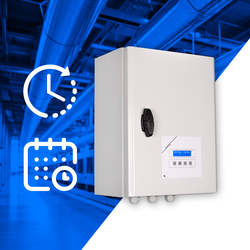
How does the thermal motor protection (TK) function work?
The controller can monitor thermal motor contacts (TK or thermal contacts) to measure the temperature in the motor windings. If the motor overheats, the TK monitoring function will disable the motor to prevent damage. In cases where the motor does not have TK contacts, the TK terminals should be bridged to simulate normal motor temperature.
What is the purpose and function of the unregulated output?
The ST2R4 provides an unregulated output of 230 VAC that is active when the motor is enabled. This output can be used to control external devices such as operation indicators or damper actuators. For example, it can be used to open dampers when the fan is active and close them when the fan is deactivated. As standards, its maximum current is 2 A.
What happens in the event of a power failure?
In the event of a power failure, the controller will automatically reset itself. When the power is restored, the motor will restart automatically, ensuring seamless operation after power interruptions.
What activates the alarm output?
The controller has an alarm output that is activated in case of a motor problem. This feature can be used to trigger alerts, such as controlling a warning light indicator to alarm of issues with the motor or the system.
What are the key features of the controller's enclosure?
The ST2R4 is housed in a high-quality steel enclosure with paint coating and an IP54 protection rating. This rating ensures that the controller is resistant to dirt, dust, and moisture, making it suitable for operation in various environmental conditions.
How should a three-phase fan motor be wired?
When wiring a three-phase fan motor, specific guidelines need to be followed to ensure correct connections and safe operation. The motor leads are typically labeled U, V, and W for the three phases, while the controller is supplied using the R, S and T terminals. The motor voltage should match the available power supply voltage. Depending on the motor voltage and power supply, the motor may need to be wired in either a delta (Δ) or star (Y) configuration, as indicated by the motor nameplate or manufacturer's documentation. Grounding guidelines specified by local electrical codes should also be followed.

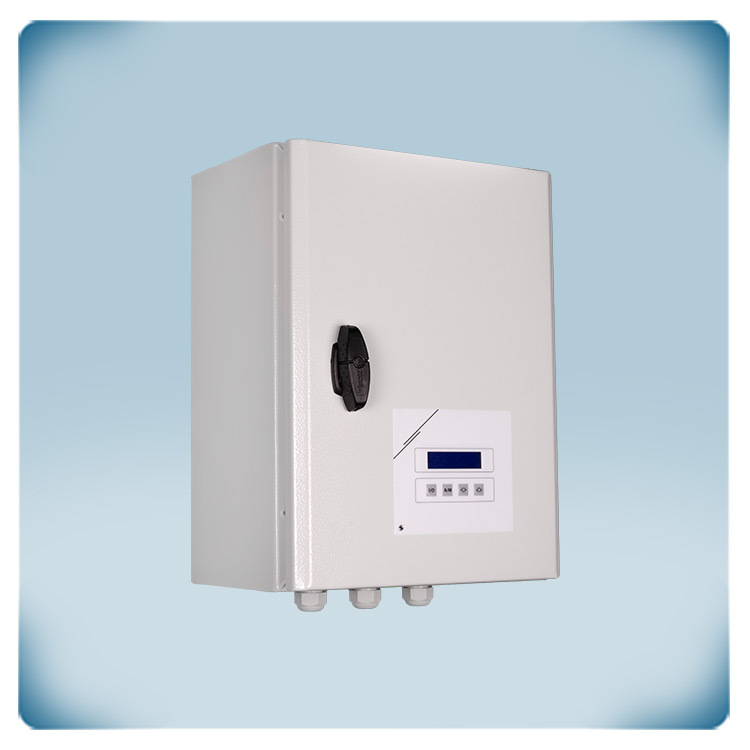
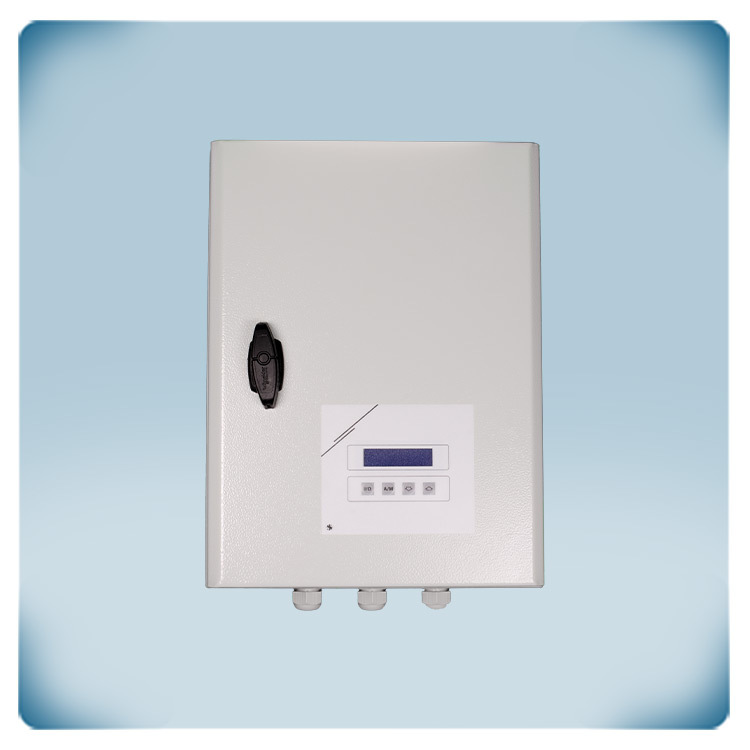
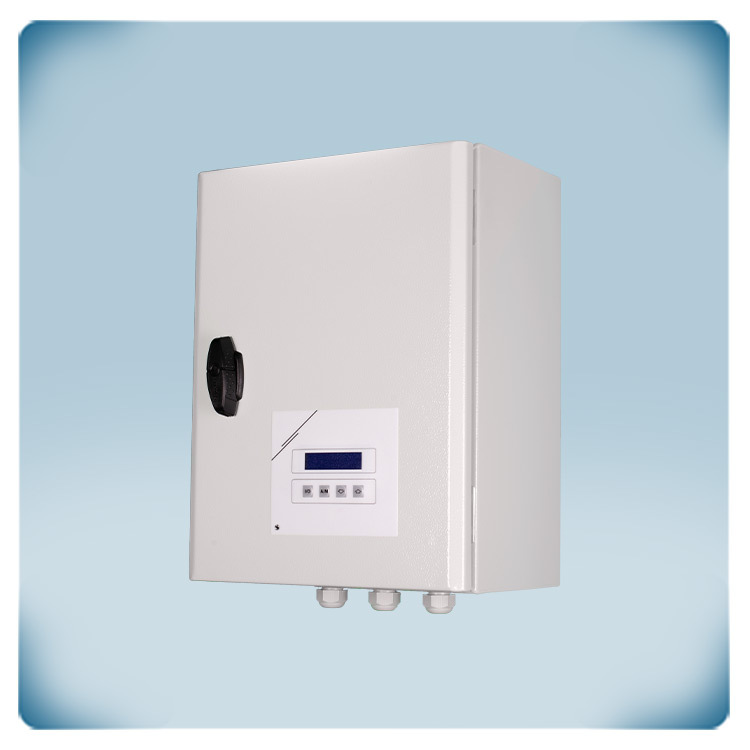

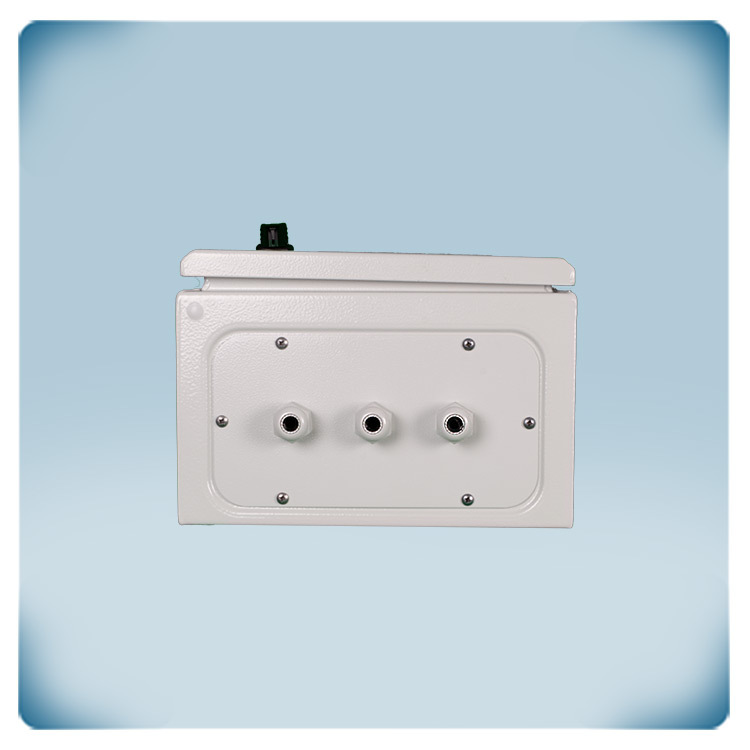
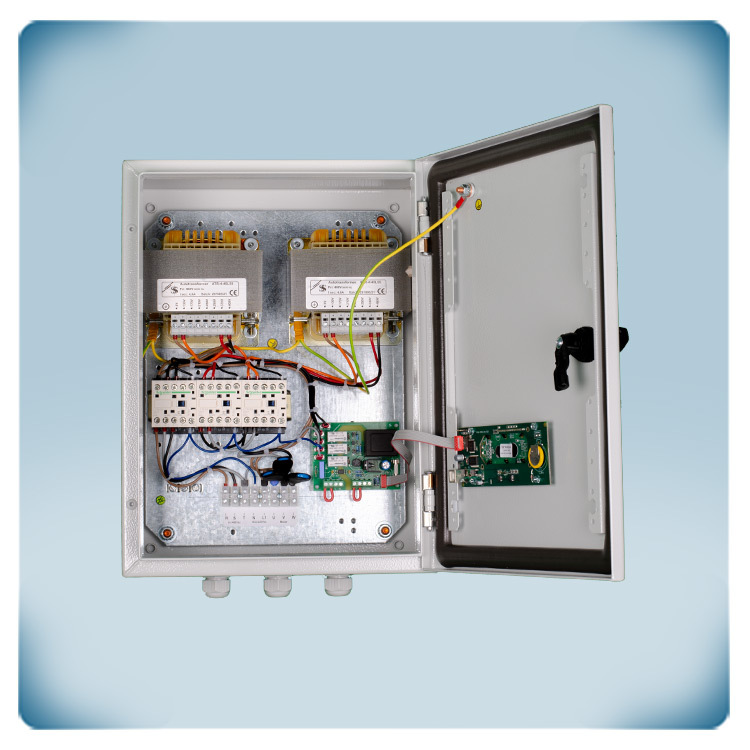
.webp)
.webp)
.webp)
.webp)
.webp)
.webp)
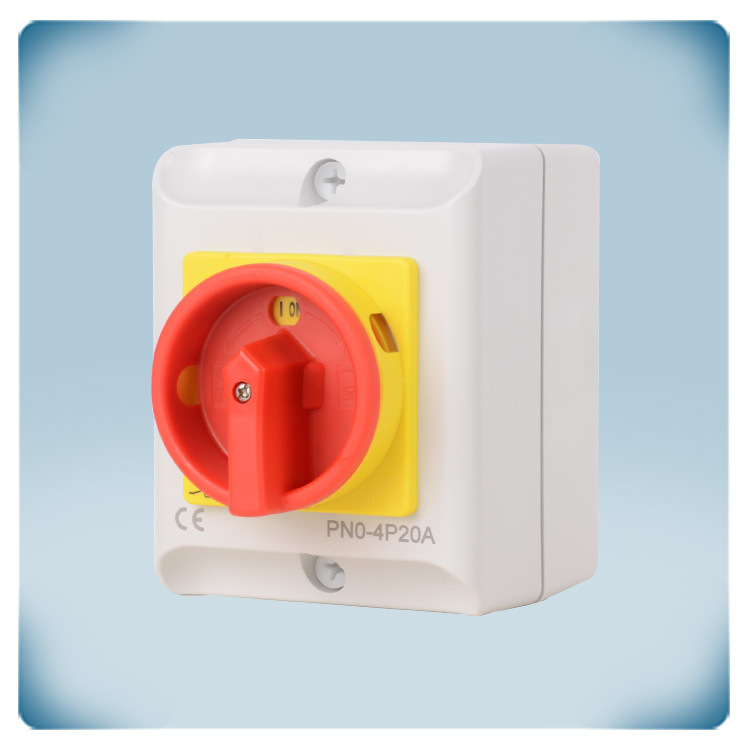
Remarks, reviews & ratings